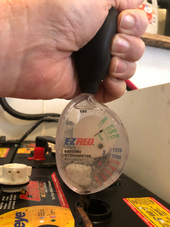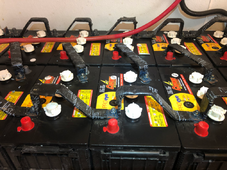I have 2 banks of Crown CR-390 batteries (L16 type). The 20 hour rating is 390 AH. My understanding is that is an absolute all-the-battery-can-give rating,
Nope. It's the Ah produced when you apply a 390/20 = 19.5A load
That battery also has a C100 rating, see the datasheet:
If you only pull 3.9A, it will deliver 435Ah.
If you pull 390/5 = 78A, you will only get 310Ah.
There are also the discharge capacity minutes for reference. As you can see a 25A load will last LONGER than 3X with a 75A (3x higher current) load.

en.wikipedia.org
and running a battery that way would basically bring the battery to dead. Eg, if I pulled 19.5A from each battery for 20 hours, they would be flat dead.
Mostly.
Of course I don't want to ever let them get that low; I wouldn't want them to go below something like 11.5V.
Depends.
Is there a way to calculate, or at least a rule-of-thumb to come up with a 20 hour rating that would not let them get below 11.5V? Like say, for example, maybe 1/2 the rated AH for practical use, or something like that?
No, because you are likely drawing a variable load all throughout the discharge, and a 20A load when the battery is at 60% will have a different voltage than when under a 50A load.
And you shouldn't just let them sit around at lower voltage just because they're not past some threshold. If you can charge the batteries, they should be fully charged and floated whenever possible.
Spend $117 on a Victron smartshunt. It actually tracks the state of charge of the battery. It can be programmed with a Peukert factor that allows it to maintain an accurate SoC based on the actual C rate of the battery. Additionally, with the temperature sensor (purchased separately), it can factor temperature into the battery efficiency to make SoC even more accurate.
The datasheet indicates 1200 cycle life with 50% DoD. 50% is the rule-of-thumb for lead acid batteries.
If these are subject to temperature fluctuations, you should be charging with temperature compenstation.
Lastly, these are flooded lead acid. You need to be neurotic about maintenance. Very easy to kill flooded lead acid with neglect.




